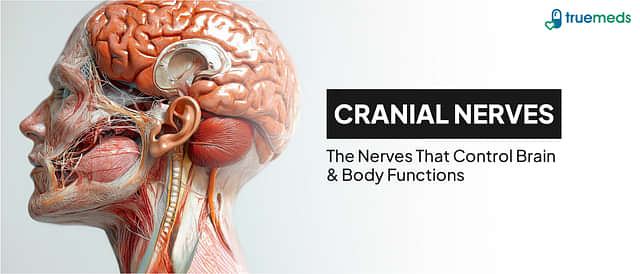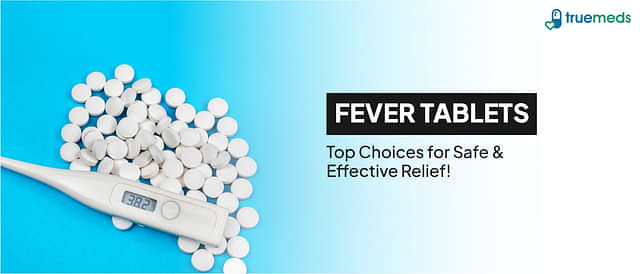Parkinson’s Disease: Causes, Symptoms & Treatment
Last updated on : 24 Apr, 2025
Read time : 10 min
Parkinson’s disease is a brain disorder that makes people shake, stiffen up, and have trouble keeping their balance and moving in sync. Usually, symptoms start slowly and get worse over time. People may have trouble walking and talking as the disease gets worse. They may also have changes in their thinking and behaviour, trouble sleeping, depression, trouble remembering things, and tiredness.
Parkinson’s could happen to almost anyone, but it shows that more men than women get this disease. Age is one clear risk: Most people with Parkinson’s get sick for the first time after they turn 60, but 5 to 10 per cent get sick before they turn 50. Early-onset Parkinson’s is often inherited, but not always, and certain gene mutations have been linked to some forms.
What is Parkinson’s Disease?
Parkinson’s disease is a progressive neurological condition that primarily affects movement and coordination. It occurs when specific nerve cells in the brain responsible for producing dopamine begin to deteriorate. Dopamine is a vital neurotransmitter that helps regulate smooth and balanced muscle activity. Early warning signs may include subtle tremors, a reduced sense of smell, slowness of movement (bradykinesia), and difficulties with balance or coordination. As the condition advances, symptoms gradually worsen, affecting both physical and cognitive functions.
Parkinson’s Disease Symptoms
Some of the symptoms of Parkinson’s disease can start years before the major problems start to show up.
Among these early signs are
- the ability to smell has become less effective (anosmia)
- constipation
- Tiny, scrawled handwriting
- During the speech, the voice changes.
- a stooped body language
Four of the most common major problems that people have are:
- movement or shake (shaking that occurs at rest)
- In slow motions, things move more slowly
- stiffness in the arms, legs, and trunk of a person
- a bad sense of balance and a tendency to fall over
Secondary Parkinson’s symptoms include things like
- expression with no expression on the face
- getting stuck while walking is something that happens a lot
- murky and low-pitched language
- blinking and swallowing have become less common.
- inclination to go backwards
- reduction in the arm, as someone walks, they swing their arms in the air.
A Parkinsonian gait is when someone walks with shuffling steps instead of steady steps
- These aren’t the only things that could be caused by this.
- flakes of white or yellow scales that appear on parts of the skin that are oily, or seborrheic dermatitis.
- more likely to get very bad skin cancer, such as melanoma
- some things make it hard for people to sleep, like vivid dreams, talking, and moving during sleep.
- depression
- anxiety
- hallucinations
- psychosis
- When you can’t pay attention or remember,
- visual-spatial relationships are hard for me to figure out
In the early stages of Parkinson’s disease, some symptoms may not be seen. There might be warning signs in your body for a long time before you start having problems with your movement, like aches and pains in your body.
Parkinson’s Disease Causes
Parkinson’s disease develops due to complex changes in the brain, many of which remain poorly understood. However, scientists have identified several contributing factors that may play a role in its onset and progression:
1. Low Dopamine Levels
As Parkinson’s progresses, the production of dopamine reduces. It is a neurotransmitter involved in movement regulation. As dopamine-producing neurons in the brain’s substantia nigra die, individuals may struggle with movement, stiffness, tremors, and impaired coordination. Symptoms worsen as dopamine levels continue to decline.
2. Low Norepinephrine Levels
In addition to dopamine, the disease may impact nerve endings that produce norepinephrine, a neurotransmitter essential for regulating blood pressure and other automatic functions. Low norepinephrine may contribute to both motor symptoms (like postural instability and rigidity) and non-motor symptoms (such as anxiety, attention difficulties, depression, and even dementia). This may also explain the common occurrence of orthostatic hypotension, where standing up causes sudden dizziness or faintness.
3. Lewy Bodies
Another contributing factor is the presence of Lewy bodies, which are abnormal clumps of alpha-synuclein protein found in the brains of those with Parkinson’s. These protein deposits disrupt brain cell function, contributing to movement issues, mood changes, cognitive decline, and potentially dementia. While Lewy body dementia is a distinct condition, there is often overlap in symptoms.
4. Genetic Factors
Although Parkinson’s is not typically hereditary, specific gene mutations have been linked to early-onset forms of the disease. Genetics account for roughly 10% of all Parkinson’s cases, most notably when symptoms appear at a younger age.
5. Autoimmune Connections
Emerging research suggests there may be an autoimmune component to Parkinson’s. In a study there was identified potential genetic connections between Parkinson’s and autoimmune diseases like rheumatoid arthritis, indicating the body’s immune response could play a role in brain cell degeneration.
Parkinson’s Disease Treatment and its Medication
There are a lot of different drugs that can be used to treat Parkinson’s disease below some of them are mentioned:
Levodopa
People with Parkinson’s disease treatment usually take levodopa, which is the most common way to treat it. It helps to replenish the dopamine that has been used up by other things. About 75% of people who take levodopa get better, but not all of their symptoms get better. With levodopa, carbidopa is most often used.
Carbidopa slows down the breakdown of levodopa, which means that more levodopa is available at the blood-brain barrier, where it can reach the brain. before taking these medications consult your doctor.
Dopamine Agonists
Dopamine agonists can act like dopamine in the brain, so they can make you feel good. They aren’t as good as levodopa, but they can be useful as bridge medications when levodopa doesn’t work as well. The medicine is recommended by a doctor then you can have the dose.
Anticholinergics
These drugs are used to stop the parasympathetic nervous system from firing. They can help you be more rigid. A drug called benztropine (Cogentin) and a drug called trihexyphenidyl, which is both anticholinergics, are used to treat Parkinson’s and is recommended by doctors.
Amantadine
Symmetrel, which has amantadine in it, can be used with carbidopa-levodopa. I think it’s a drug that stops the body from getting too much glutamate (NMDA). For a short time, it helps with dyskinesia, which can happen as a side effect of levodopa. Before taking medicine consult your doctor.
COMT
Inhibitors of Catechol O-methyltransferase (COMT) make levodopa work longer. Entacapone (Comtan) and tolcapone (Tasmar) are two COMT inhibitors that people can take.
Tolcapone can damage your liver. better with other treatments, so this is usually the last one they try.
Entacapone does not harm the liver. Stalevo is a pill that has both entacapone and carbidopa-levodopa in it at the same time. So the doctor will recommend you this medicine.
MAO-B Blockers
Inhibitors of monoamine oxidase B, MAO-B, stop the enzyme from working. This enzyme breaks down the brain’s dopamine, which makes you feel good. An example of an MAO-B inhibitor is Eldepryl, which is also called rasagiline (Azilect).
Before taking any other medicines that have MAO-B inhibitors, talk to your doctor about it first. They can interact with a lot of different drugs, like:
- antidepressant
- ciprofloxacin
There is a chance that the effectiveness of Parkinson’s disease medicines will go down over time. When someone has late-stage Parkinson’s, the side effects of some medications may be more important than the benefits that they have. However, they may still be able to manage the symptoms well enough. The doctor only recommends you these types of medicine please don’t take it without consultation.
Therapies
1. Amplitude Training
Amplitude training is a type of physical therapy used to treat bradykinesia and hypokinesia. Bradykinesia is a slowing down of movement and one of the main signs of Parkinson’s disease. Hypokinesia means small movements and is another common symptom of Parkinson’s disease.
In amplitude training, patients practise making big movements, such as swinging their arms or taking big steps. This type of therapy helps retrain your muscles and keeps you from making small, slow movements.
2. Reciprocal Movements
Reciprocal movements happen at the same time but in opposite directions. For example, spinning your arms as you walk is a reciprocal movement. Parkinson’s disease can make it hard to move back and forth, which can make it hard to stay balanced, but physical therapy can help.
Your physical therapist may have you use a stationary bike or elliptical machine to strengthen reciprocal patterns. They might also suggest that you practise reciprocal movements on your own by focusing on swinging your arms as you walk. Dancing and tai chi can also help improve your ability to move.
3. Balance Training
Your brain uses information from your eyes, ears, muscles, and joints to keep your body balanced. Parkinson’s disease can affect your sense of balance, making it hard to walk steadily. If you have trouble keeping your balance, your physical therapist can add balance training to your exercise routine and guide you on things you can do at home. Balance training is usually an important part of treating Parkinson’s disease because it improves walking and keeps people from falling.
4. Stretching
Stretching makes people with Parkinson’s disease more flexible and reduces the stiffness of their muscles. For everyday activities like walking, bending, and lifting, you need to be flexible. Stretching exercises can make you more flexible, which can make it easier to get out of bed, put on clothes, pick things up off the floor, and do other things. You can tell your physical therapist what part of your flexibility you want to work on, and they will show you stretches that target those muscles.
In Parkinson’s disease, the muscles that move joints tend to tighten. Because of these in stretching routine mainly focuses on these areas:
- Shoulder and elbow
- Calves
- Knees and hamstrings
- Palms and wrists
- Backside
- Neck
- Back wall
You can do the stretches your physical therapist shows you several times a day to loosen up your muscles.
Buy online medicines through Truemeds at the best price and discounts. For all the latest coupons and offers on branded and generic medicines, follow us on Instagram and Facebook.
Frequently Asked Questions (FAQs)
The main cause is the loss of dopamine-producing brain cells. While the exact trigger remains unknown, factors like genetics, environmental toxins, and abnormal protein build-up (Lewy bodies) are believed to play a role.
Parkinson’s is a chronic, progressive condition with no known cure. However, many individuals manage their symptoms effectively through medication, physiotherapy, and lifestyle adjustments, maintaining a good quality of life for many years.
Parkinson’s itself isn’t always painful, but associated symptoms, such as muscle stiffness, cramps, and poor posture, can lead to chronic discomfort or pain. Pain levels vary depending on disease severity and individual response.
End-stage Parkinson’s involves severe motor impairment, difficulty swallowing, speech issues, frequent falls, and profound cognitive decline. Daily tasks often require full-time assistance, and the individual may become bedridden or lose the ability to communicate.
Yes, memory and cognitive abilities can be affected, especially in later stages. Some people experience mild forgetfulness, while others may develop dementia or more serious cognitive problems linked to Lewy bodies in the brain.
Yes, with proper management, many people live for years, even decades after diagnosis. Medication, exercise, and support systems help maintain independence and manage symptoms effectively throughout the disease’s progression.
Disclaimer
Our healthcare experts have carefully reviewed and compiled the information presented here to ensure accuracy and trustworthiness. It is important to note that this information serves as a general overview of the topic and is for informational purposes only. It is not intended to diagnose, prevent, or cure any health problem. This page does not establish a doctor-patient relationship, nor does it replace the advice or consultation of a registered medical practitioner. We recommend seeking guidance from your registered medical practitioner for any questions or concerns regarding your medical condition.
Popular Articles
Recent Articles
Top-Selling Medicines:
...View more
Top-Selling OTC:
...View more
Company
About UsHealth ArticleHealth StoriesDiseases & Health ConditionsAyurvedaAll MedicinesAll BrandsNeed HelpFAQSubscribe
Registered Office Address
Grievance Officer
Download Truemeds

Contact Us
Our customer representative team is available 7 days a week from 9 am - 9 pm.
v3.7.31
2025 - Truemeds | All rights reserved. Our content is for informational purposes only. See additional information.
Our Payment Partners









































